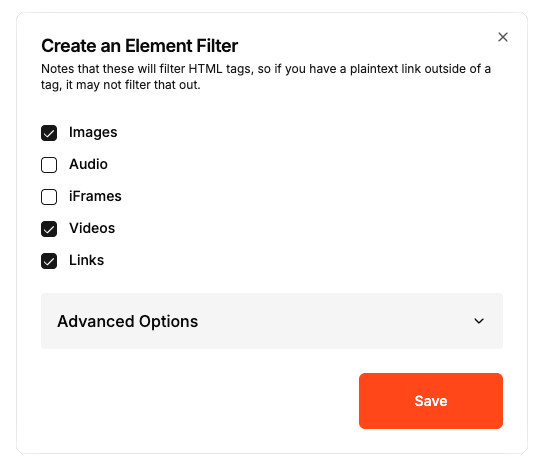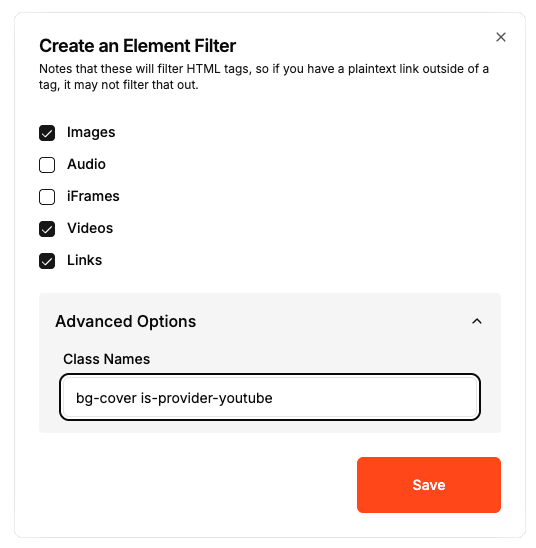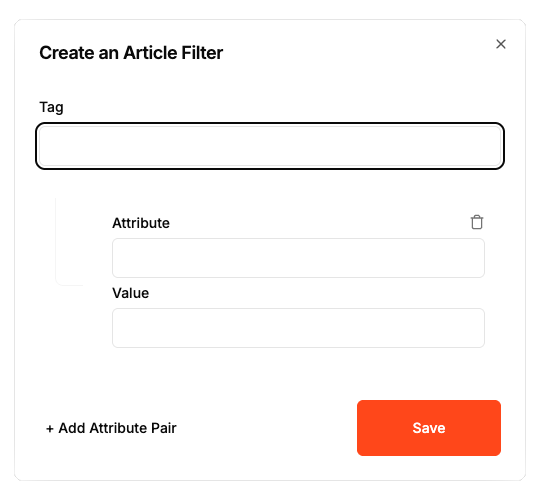Requirements
To participate in the TollBit marketplace, you will need to ensure your TollBit subdomain is provisioned and that AI bot traffic is being redirected to hit your bot paywall.
For details on how to implement the bot paywall, please review the Boy Paywall steps under the appropriate integration within your tech stack.
Setting Rates
This is the core of the TollBit product, and where you can set prices on your content. At the moment there are a few ways to set rates. You can set global rates which apply to all your content across all subdirectories and pages. There are two types of licenses, rates should be established for both:
- Summarization License Allows AI customers to access your content to create a summary, grounding, or citation with a single use license. Simply, set your rate per 1000 pages accessed and click activate and allow AI customers interested to view rates and pay for your content, you can consider your current RPM as a benchmark when determining what value to set as your Summarization Rate
- Full Display License Allows AI customers to display the complete text of an article once. Set your rate per 1000 pages accessed and click activate to begin generating revenue, you can consider your syndication rates as a benchmark when determining this rate.
Within both types of licenses you can also set custom rates according to the
following hierarchy: bot -> page -> keyword -> time -> subdirectories.
This means that when determining the price of a page for a particular request,
we first check if that request is from a bot that matches any of your bot rates.
If so, we return that rate. If there are no bot matches, we then check if the
requested page matches any of your page rates. We keep going down the chain,
trying to find a match, and if we find no matches at the end, the content cannot
be accessed by AI customers.
TollBit doesn't take a percentage of your rates or revenue share. We simply charge AI customers a small transaction fee on top of the rates you set. Your payments reflect your rates completely; if you set a rate of $0.001 per page, AI customers will pay that and you will receive that amount completely.
Customizations for Rates
Bot Rates
These rates allow you to set special rates for any specific bots that access your platform, and will override all other rates. You should set this type of rate if you have struck a licensing deal with a company that employs a particular user agent, and want to give them special rates to access your content (usually 0).
Page Rates
These rates allow you to set a rate for a specific page on your website. If you have any page that you know gets high bot traffic (i.e. sports or election results), or if you have a very high quality piece of original reporting, you can set a special rate for that page. This will override all other rates except bot rates.
Keyword Rates
These rates allow you to set a price for pages that may contain a particular
keyword. If you know that there are some high profile sporting events coming up,
you may want to set a higher price for pages that mention football or
basketball. This rate is still in beta.
Directory Rates
These rates let you set a flat fee for all the content within a page directory
of your site. For a quick way to instantly price your content, you can set a
price for your top level directory, and this will automatically apply to all
pages. You can drill down into further subdirectories and set pricing there, and
it will override any price in a higher directory. For example, you can set a
base price of $0.001 at the root level, and then set a price of $0.005 for the
/sports directory. Everything under /sports will now be $0.005 while
something under /cooking will still be $0.001.
Standard Licenses
The TollBit platform has two standard licenses.
- "Summarization" license. At a high level, this allows AI customers to use a piece of your content once as part of a summary, citation, or grounding.
- "Full Display" license. At a high level, this allows AI customers to display the content in its original format within their application once. Neither license allows for AI customers to utilize your content for training or creating generative AI models.
When activating rates, you are agreeing to the standard license terms. These license terms will apply each time an AI company uses your content. You can review the full licenses within your portal on the Rates page by clicking the question mark next to the license name, and rates can be independently set and activated per standard license.
When you first onboard onto the platform, your rates will not be active and demand side users will not be able to fetch your content through TollBit. In order to activate your rates and price your content, click the "Activate" button on the top of the rates page. Once this is active, all your rates will be live.
Custom Licenses
For any partners that you have struck deal with, you can upload a custom license the the user agents of that specific partner. Any requests made to TollBit with that partner's user agents will include the license that you uploaded in the transactions.
Transactions
This page provides an audit trail where you can see all the requests that have been made to your website through TollBit. For each request, you are able to see the user agent that made the request, the page they hit, and the price they paid for that page.
Content Controls
Control what data to include or exclude when developers request content from your website through TollBit.

Element Filters
Element filters help exclude certain types of content from the HTML of your website, such as removing all images, links
or embedded content from being returned to agentic consumers. Note that in order for this feature to work properly, the
content to be excluded needs to be written in well formatted HTML. For example, we won't be able to exclude a hyperlink
if it's not within an <a> tag.

For more advanced use cases you can exclude all elements that are styled with a specific CSS class.

Article Filters
Article filters allow you to programmatically exclude entire HTML pages from AI access. An article filter can be configured to match a specific HTML tag with specific attributes and attribute values. Any page that contains the tag that matches will be excluded from agentic access. This feature is intended to be used to exclude content like syndicated articles.

If you already have a <meta name='robots' content='noindex,nofollow'> tag (or similar) to exclude pages from
traditional web crawling, configuring an article filter to match that tag will also exclude pages containing that tag
from AI access.

Content Formatting
We format content to most effectively integrate within AI applications and into LLM contexts. This feature comes out of the box when using TollBit. All sites onboarded with TollBit will work with this functionality.
What does the formatted content look like?
This formatting process makes no changes to the original content. We simply
clean the content for you to be perfectly ready for your data pipeline.
Specically, the data comes back as a markdown representation of the original web
page. The main field of the content response will likely contain the actual
content of the article without any clutter of navigational components or social
media links. Should you want to use those fields, you may get them from the
header and footer fields if we were able to parse them out.
Finally, the metadata field may contain additional information that isn't part
of the original content, but can provide additional context around the content.
This could include raw data, follow up link, or additional topics for the end
user to explore.
The following is what a user who hits our FAQs page might see.
Example Content Formatting
{
"content": {
"header": "",
"main": "
# TollBit - FAQs
[Get started](https://signup.tollbit.com)
# FAQs
[Request a demo](https://signup.tollbit.com)
-
## What is TollBit?
TollBit is a first-of-its-kind platform to help websites ensure fair compensation for their content and data. The platform allows AI bots and data scrapers to pay websites directly, rewarding quality content creation and mitigating the legal uncertainty of scraping.
-
## How does the platform work?
On the supply side, TollBit’s clients are companies with openly accessible websites, whose data are vulnerable to scraping. They includes publishers, sites with user-generated content, and sites that allow end users to take action - such as e-commerce sites.
Using TollBit, websites can sign up rates and rules can be set for autonomous (non-human) access to any specific URL. TollBit also provides powerful analytics and visibility to companies about autonomous traffic.
On the other side, companies doing the scraping today can use TollBit to access content and data on websites for a fee in exchange for licensing and a cleaner more digestible version of the URL page.
TollBit enables websites to realize the true value of their data, which would otherwise be prone to payment-free scraping.
-
## Are you onboarding publishers?
Yes, we are onboarding publishers and partners.
-
## A number of publishers are cutting their own content licensing deals with tech companies - how would this platform impact the platform?
TollBit is an “and” product. We encourage our websites to pursue 1:1 licensing deals when they make sense. TollBit can also help provide critical missing infrastructure for licensing deals, including reporting, rate limits, and authentication.
-
## How do you expect to set pricing/value of content?
On-demand access rates are something that will depend on the unique needs and business model of our individual clients. Publishers set their own rates on TollBit. However, private licensing deal terms are never public.
-
## Was this developed in concert with any publishers?
The development of the TollBit platform was informed by conversations with dozens of publishers and the product will continue to be improved with their feedback.
-
## Do publishers need to have a paywall in order to use TollBit to generate revenue? If information is already in the public domain then how can AI companies be expected to pay?
Publishers do not have to have an existing paywall in place to generate revenue via TollBit.
-
## Are there restrictions on how content can be used once licensed through TollBit?
Yes, there are specific scopes and restrictions of the on-demand license.
If you use the content/data in a form that is not covered by the license, then the license is not valid and you do not have protection or permission for use.
Made with care in Nashua, Boston, and
New York City
© Novoscribe, Inc. 2024",
"footer": ""
},
"metadata": "",
"rate": {
"priceMicros": 20000,
"currency": "USD",
"licenseType": "ON_DEMAND_LICENSE",
"licensePath": "...",
"error": ""
}
}
As you can see, none of the original content is affected in any way. Just some trimming down of the extra HTML!
Why is this format good for AI?
This formatting maintains crucial context for the LLM like titles, paragraphs, links, etc. At the same time, this format strips away the exessive HTML tags, scripts and other clutter that comes back from scraping typical websites. This format should optimize the value in the content, while being efficient to how many tokens you pass to the LLM.